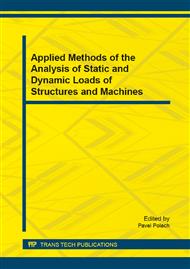[1]
M. T. Hutchings, A. D. Krawitz (Eds. ), Measurement of residual and applied stress using neutron diffraction, NATO ASI Series, Applied Sciences 26, Kluwer Academic Publisher, (1992).
DOI: 10.1007/978-94-011-2797-4
Google Scholar
[2]
V. Stelmukh, L. Edwards, J.R. Santisteban, S. Ganguly, M.E. Fitzpatrick, Weld stress mapping using neutron and synchrotron x-ray diffraction, Materials Science Forum 404-407 (2002) 599-604.
DOI: 10.4028/www.scientific.net/msf.404-407.599
Google Scholar
[3]
A.D. Krawitz, R.A. Winholtz, Use of position-dependent stress-free standards for diffraction stress measurements, Materials Science and Engineering A185 (1994) 123-130.
DOI: 10.1016/0921-5093(94)90935-0
Google Scholar
[4]
P. Mikula, M. Vrana, P. Lukas, J. Saroun, P. Strunz, H.J. Ullrich, V. Wagner, Neutron diffractometer exploiting Bragg diffraction optics – A high resolution strain scanner, in: T. Ericsson, M. Odén, A. Andersson (Eds. ), Proceedings of the ICRS-5, Linköping, 1997, Vol. 2, pp.721-725.
DOI: 10.1117/12.267890
Google Scholar
[5]
P. Mikula, M. Vrana, P. Lukas, J. Saroun, V. Wagner, High-resolution neutron powder diffractometry on samples of small dimensions, Materials Science Forum 228-231 (1996) 269-274.
DOI: 10.4028/www.scientific.net/msf.228-231.269
Google Scholar
[6]
T. Kannengiesser et al., Effects of the load history on the residual stress distribution in welded components, Welding in the World 50 (2006) 11-17.
DOI: 10.1007/bf03266531
Google Scholar
[7]
L. Karlsson, Improving fatigue life with low temperature transformation (LTT) welding consumables, Svetsaren, 2009, Vol. 64, No. 1.
Google Scholar
[8]
S. Zenitani et al., Prevention of cold cracking in high strength steel welds by applying newly developed low transformation-temperature welding consumables Trends in Welding Research 2002, in: Proceedings of the 6th International Conference (ASM International), 2003, pp.569-574.
Google Scholar


